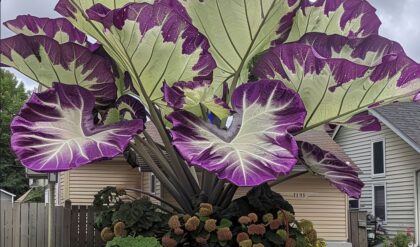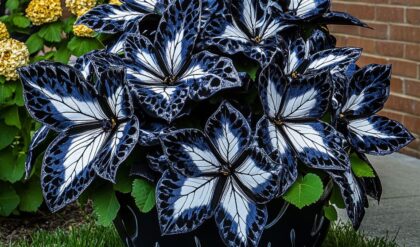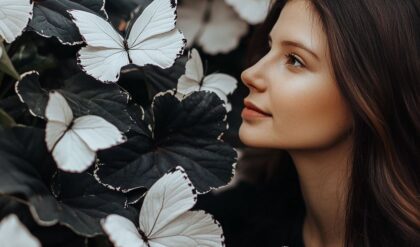Which are the top philodendrons you should have in your house? Find out right now with these 5 most eye-catching philodendrons and how to take great care of them.
Philodendron is a genus of flowers that originated in the rainforests of South America. Over time, they have been domesticated to adapt to the diverse climates of different regions and have become popular indoor plants.
In addition to their exceptional adaptability, Philodendrons are also known for their ability to filter air pollutants, making them a top-of-mind choice when it comes to decorating.
Here in this blog post, we will introduce to you the 5 most stunning, easy-to-grow, and well-suited Philodendron vine varieties that thrive even in low-light conditions.
Top philodendrons to grow
Heartleaf Philodendron (Philodendron Hederaceum)
This heartleaf Philodendron is widely seen all over the place with its heart-shaped leaves clinging to windowsills or is grown in hanging baskets. Adaptive to a wide range of light conditions and low humidity, Hederaceum is the most easy-to-grow kind of Philodendron and the perfect option for beginners with the plantbiz.
Hederaceum leaves are two to three inches wide and can grow to 8 inches wide if climbing. Young leaves might have a light copper color and turn green as they mature.
Heartleaf Philodendrons
Philodendron “Lemon Lime”
This Philodendron variety with its eye-catching and cheerful two-tone yellow-green leaves may be unfamiliar to many, but its beauty is undeniable.
Lemon Lime is particularly impressive, resembling a fountain with its bright leaves arranged in layers. Philodendron “Lemon Lime” deserves a spot in your indoor plant collection.
Philodendron “Lemon Lime”
Philodendron “Brasil”
Philodendron “brasil” retains the sturdy nature of heart-shaped leaves while adding mesmerizing streaks of color with random splashes of yellow paint scattered across the leaves.
Brasil can tolerate medium light and requires brighter conditions than most Philodendrons. In low-light conditions, it may turn completely green.
Philodendron “Brasil”
Philodendron Brandtianum
Brandtianum’s unique variegation attracts the attention of Philodendron vine enthusiasts. Each silvery heart-shaped leaf is adorned with contrasting dark green veins. This popular Philodendron vine climbs and grows rapidly in conditions of adequate light and humidity.
Brandtianum is an excellent choice for low-light spaces as it only requires partial light. Philodendron Brandtianum looks great planted in hanging baskets or climbing moss poles.
Philodendron Brandtianum
Philodendron Camposportoanum
This kind of Philodendron has a dark and velvety-appearance young leaf. As it matures, these leaves will grow into larger heart shapes and have shades of red mixed with green pigments. The plant will also introduce stunning three-lobed leaves that can reach nearly 8 inches in length, which makes them look like a completely different plant.
Camposportoanum enjoys climbing and prefers high humidity. Therefore, you can help them grow faster with coconut oil coir poles to maintain the necessary humidity.
How to take care of the Philodendrons
Philodendrons are no strangers to those who love foliage houseplants. However, there are a few things to keep in mind when deciding to bring a Philodendron friend into your home.
Watering
As a typical tropical plant, Philodendron prefers moist yet well-drained soil. Either overwatering or underwatering will cause slower growth, withered leaves, or rotted roots.
In addition, you should only water with room temperature water, since cold tap water might shock the plant as Philodendrons are quite sensitive to temperature.
Tips: Look for signs. Yellow leaves – Underwater. Brown leaves – overwater. Mist your Philodendron a few times a week.
Light
Make sure the plant is not in direct sunlight to avoid leaf burn. The best location you can put this beautiful tropical plant is indoors, and you will know it’s receiving enough light if growth remains vigorous and the leaves are between two and four inches long.
Soil and Fertilizer
Philodendrons prefer a well-draining potting mix that is high in organic matter. A mix of equal parts peat moss, perlite, and coco coir might be a good starting point.
During the growing season (spring and summer), you should fertilize your Philodendron every two weeks with a diluted liquid fertilizer.
Common Pests and Plant Diseases
Besides occasional fungal leaf issues, Philodendrons can attract fungus gnats. These tiny flies love damp, peaty potting mix and crawl around the soil surface. To solve this, you should let the soil dry slightly between waterings, as they will fly away in search of moisture.
Aphids, mealybugs, spider mites, and common houseplant pests can also target Philodendrons. To manage these, you can try spraying the plant with a diluted vinegar solution or horticultural oil.
Popular problems with Philodendrons
Philodendrons thrive in shade, tolerate dry air, and require minimal maintenance. But even these easygoing species have their problems:
- Yellowing leaves: This signals overwatering or insufficient sunlight. Water only when the top inch of soil dries, which is usually less than once a week. While they dislike direct sun, they need some indirect light to flourish.
- Brown leaves: Leaves turning brown and crispy might be a sign of fertilizer overload or sunburn from direct sunlight.
- Leggy Stems: Unpimched stems can grow long and bare, with most leaves concentrated at the tips. If you prefer a fuller plant, pinch off stems regularly above a leaf node. This encourages side growth for a bushier look.
FAQs
Q: How are Pothos and Philodendrons different from each other?
While their heart-shaped leaves can be confusing, pothos leaves are wider, thicker, and waxy with less inward curving than philodendrons. In addition, yellow or variegated leaves further suggest pothos.
Q: How long is the lifespan of a Philodendron?
A Philodendron can live for decades if repotted every two or three years and is taken care of.
Q: Is Philodendrons suitable to grow in the garden?
Absolutely. But you might consider the climate of where you are living since Philodendrons grow best when the outdoor temperature rarely falls below 50 Fahrenheit degrees.
Philodendrons are fast-growing species. However, it might reach remarkable heights if you closely follow our caring guides and meet all its needs in lighting, watering, soil, and temperature. And these are the top Philodendrons that are the most eye-catching and stunning you should grow indoors.




